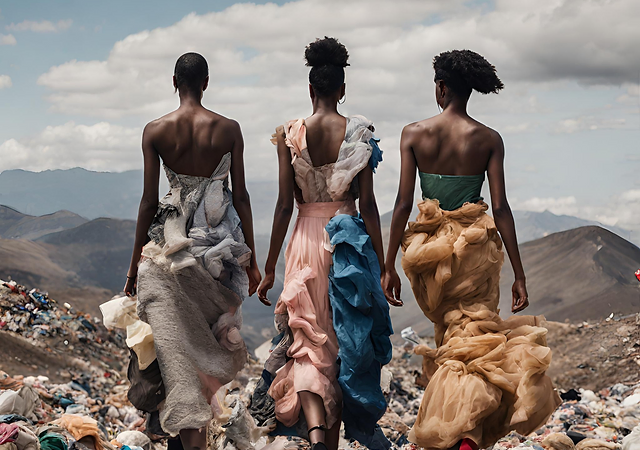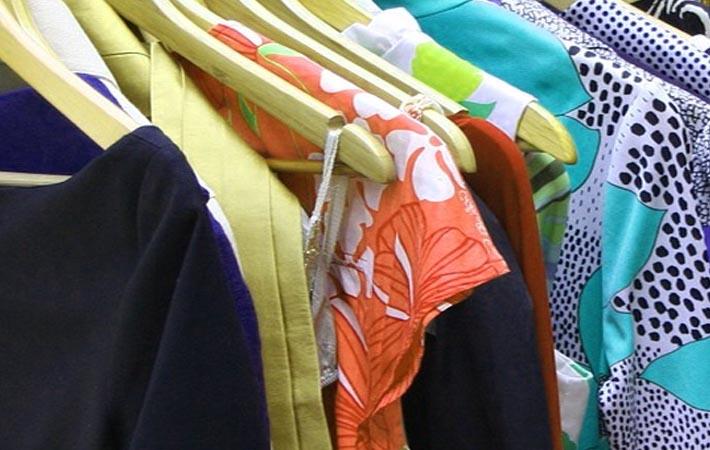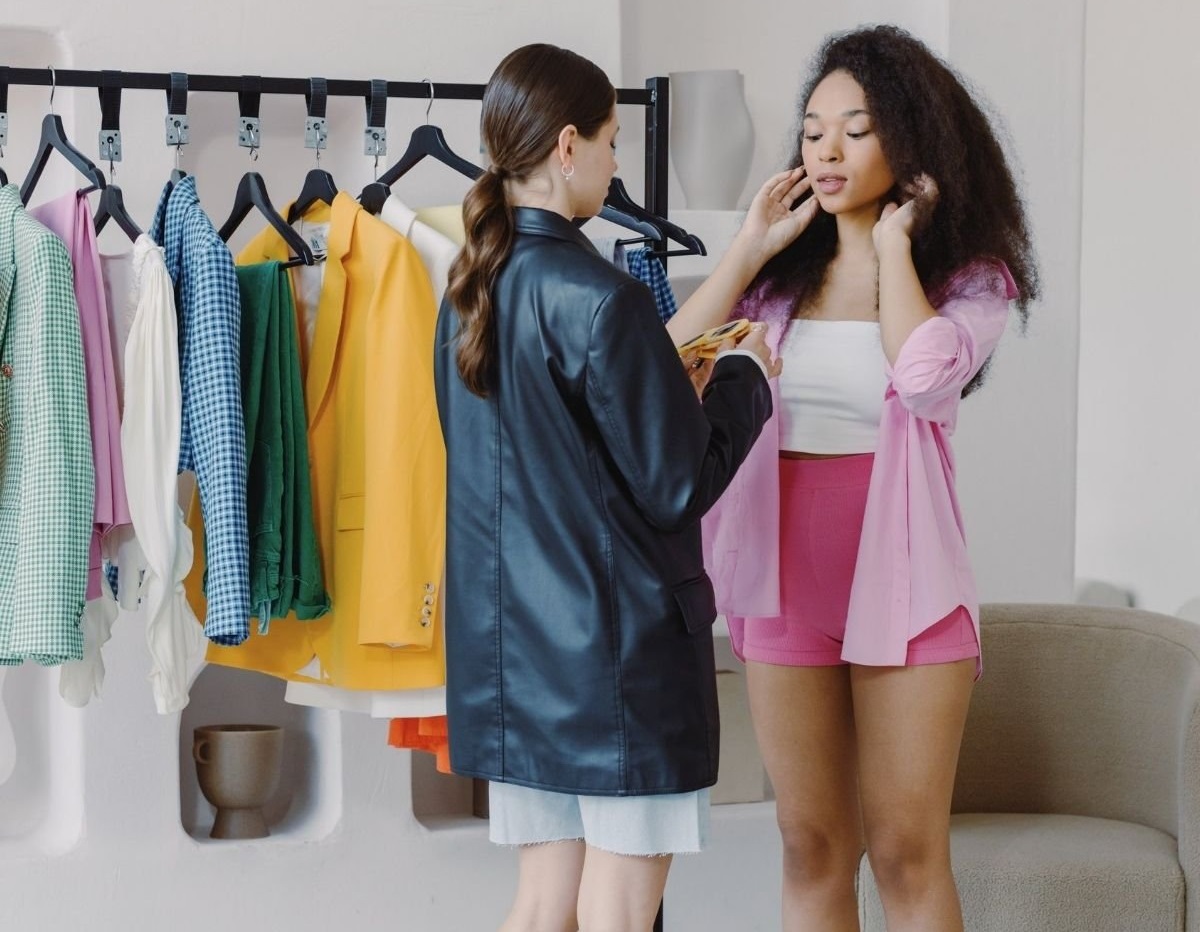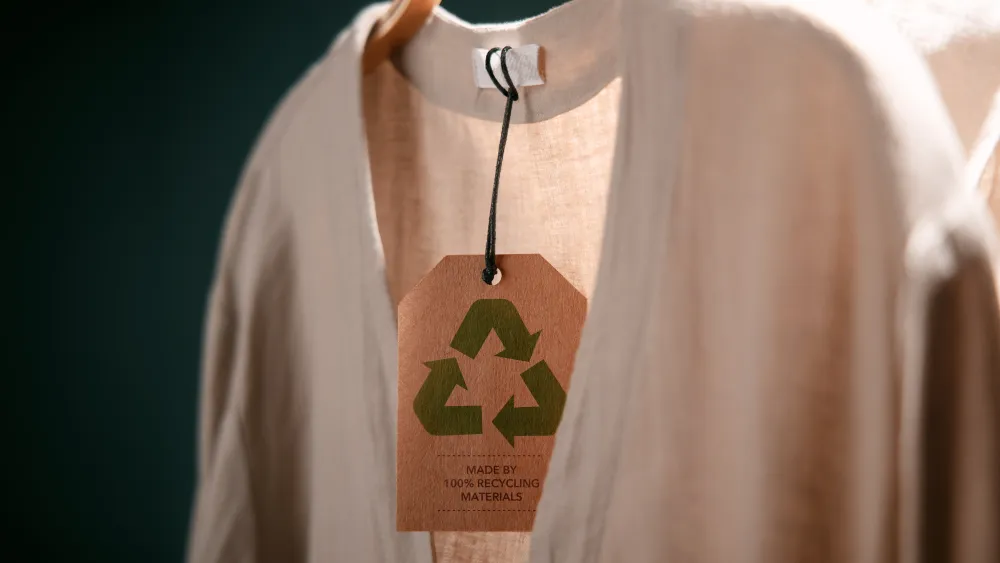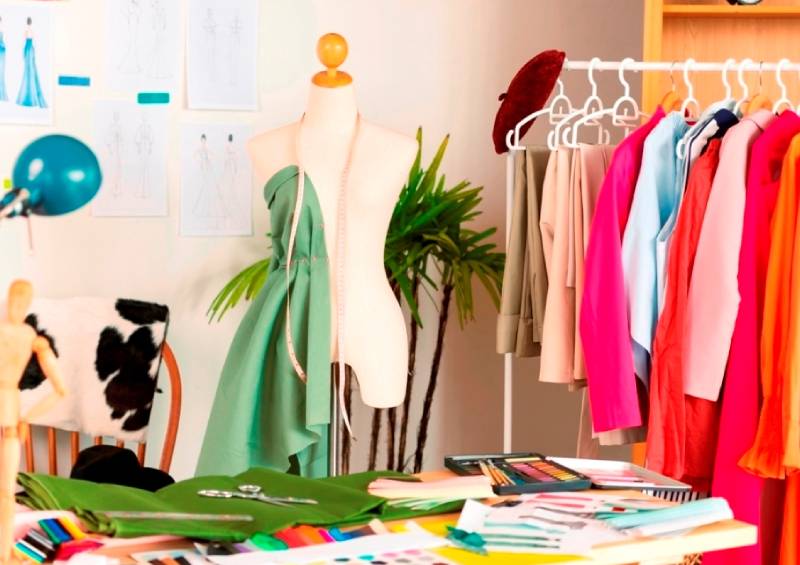FW
Having successfully completed its expansion program, Pioneer Embroideries (PEL) is poised to maximise the benefits in the specialty polyester filament yarn (SPFY) segment by aligning its product mix with demand in both domestic and export markets.
PEL’s strategic entry into super specialty segments—such as flame retardant, biodegradable polyester yarns, corn fiber-based yarns, and Global Recycled Standard (GRS) certified recycled yarns—positions the company to capitalise on future opportunities.
Currently, GRS-certified recycled yarns account for nearly 20 per cent of PEL’s SPFY business volume, with further growth anticipated.
In the embroidery line (EL), PEL expects to benefit from modernising and consolidating its facilities, enhancing production efficiencies. Sales from the expanded SPFY capacities in FY24 have primarily focused on value-added products, with their share increasing by nearly 25 per cent in value terms during the year.
Despite challenges in developed economies due to high interest rates and geopolitical tensions affecting sea trade, the textile business is positioned for growth. PEL anticipates rising exports in both traditional markets (US and Europe) and new geographies developed in recent years. PEL’s investments in modernising production capabilities and diversifying product offerings have set the stage for significant growth. By focusing on high-margin specialty products and expanding global markets, PEL aims to capitalise on emerging opportunities and enhance its market leadership in the textile industry.
Globally renowned under its trademark Silkolite, PEL has expanded also its yarn capacity to 26,000 mtpa, emphasising new product categories like Partially Oriented Yarn (POY) and Draw Textured Yarn (DTY). With a strong focus on POY-based specialty textiles such as flame retardant, automotive, and anti-microbial yarns, PEL aims to be a one-stop shop for specialty yarn needs.
Embroidery remains central to PEL’s business, supported by a skilled design development team creating innovative designs that align with global fashion trends. To further strengthen its position, PEL has replaced 32 embroidery machines across multiple locations with eight state-of-the-art machines in a centralized unit. This strategic move aims to enhance production capacity, improve quality, increase efficiency, and reduce costs. The company invested ₹33 crore in importing machinery from Lasser AG, Switzerland, and an additional ₹7 crore for ancillary machinery and utilities.
Adding feathers to her list of banned materials, sustainability champion Stella McCartney has urged fellow international designers to sign PETA’s Feather-Free Pledge. This call to action follows an exposé by the animal rights group, revealing the harsh realities faced by birds exploited by the feather industry, where they endure both a miserable life and a violent death.
In a series of recently released social media videos, McCartney raises awareness among her millions of global followers about the suffering birds experience for the sake of fashion. Hoping her efforts will inspire designers to use vegan materials to recreate the look, lightness, movement, and insulation of feathers, McCartney launched her Autumn 2024 collection demonstrating the desirability and possibilities of cruelty-free alternatives that are kind to animals and Mother Earth.
The Autumn 2024 collection by McCartney features BioPuff, a material made from bulrushes that contributes to wetland regeneration in Cambridgeshire, helping to lower greenhouse gas emissions and boost biodiversity.
Alongside McCartney, top designers such as Felder Felder, EirinnHayhow, Richard Malone, Patrick McDowell, VIN + OMI, Pīferi, Sarah Regensburger, and Joshua James Small have already signed the Feather-Free Pledge, highlights PETA. Many other designers are opting for luxurious faux feathers made from bamboo, recycled materials, and metals, the organisation adds.
Karl Mayer TechnischeTextilien has unveiled its Max Glass Eco, an advanced addition to its glass processing machinery lineup. Designed for high-output production of standard glass fibers, especially for the wind power sector, this model bridges the gap between the company’s previous offerings - the Cop Max 4 and Maxtronic.
In an interview, Hagen Lotzmann, Vice President of Sales, highlighted the Max Glass Eco’s affordability and flexibility. Positioned between the higher-end Cop Max 4 and the more adaptable Maxtronic, the new machine offers a cost-effective solution without sacrificing performance. It is tailored for high-volume, standard glass production, making it particularly attractive to the wind power industry due to its short amortization period.
Lotzmann emphasized that the Max Glass Eco provides exceptional value by combining competitive pricing with the company's renowned durability and quality. Additionally, Karl Mayer offers comprehensive support, including spare parts, development assistance, and staff training.
Looking ahead, Lotzmann hinted at future innovations, including increased automation to address labor shortages and enhance product quality. The company remains committed to supporting niche markets with state-of-the-art technology.
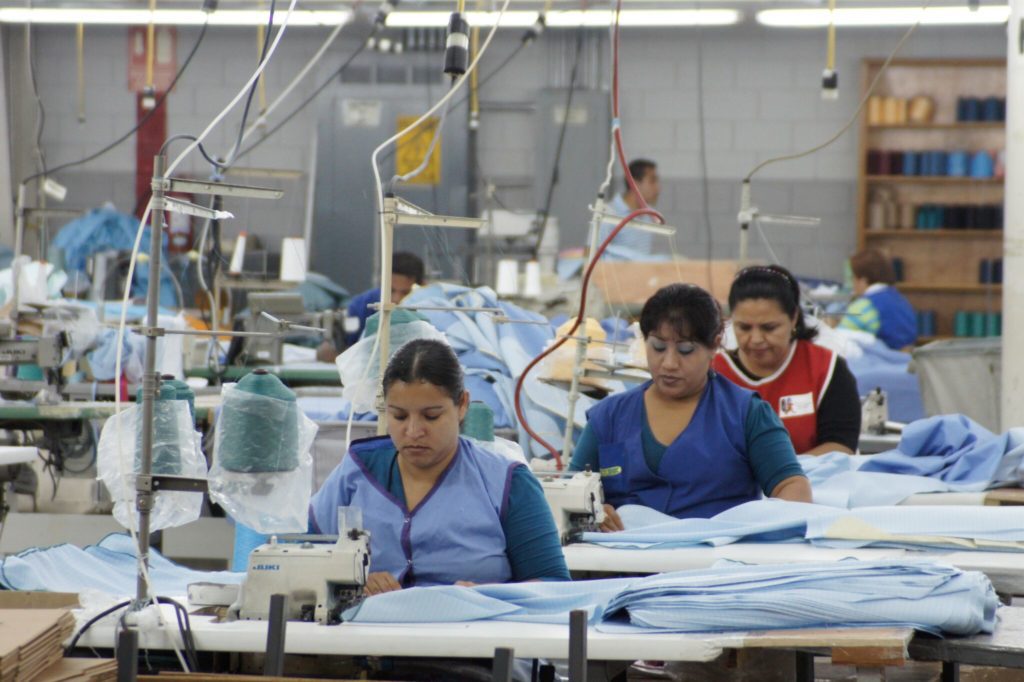
The statement ‘Mexico is ground zero as China takes Global South battle to US backyard’, highlights a complex shift in the industry's landscape, particularly for the Americas. The global south refers to developing nations in Latin America, Africa, and Asia. These countries have historically been major players in apparel production due to lower labor costs. However, China's rise as a manufacturing giant shifted the landscape.
Data tells the story
As per WTO, developing countries now account for over 60 per cent of global textile and apparel exports. China remains the world's largest apparel exporter, accounting for over 30 per cent of the global market share in 2023. Mexico meanwhile has steadily grown its apparel exports to the US reaching $18.5 billion in 2022 indicates Statista data. This growth is partly due to the North American Free Trade Agreement (NAFTA), which lowered trade barriers between the US, Mexico, and Canada. Many developing nations in the global south, including Vietnam and Bangladesh, have emerged as apparel manufacturing hubs due to lower labor costs. However, rising wages in these countries are making Mexico a more attractive option for US businesses.
Mexico's allure
Proximity is the biggest scoring point for Mexico which boasts of its physical closeness to the US market, crucial for fast fashion and rapid response to trends. What’s more, the North American Free Trade Agreement (NAFTA) and its successor, the United States-Mexico-Canada Agreement (USMCA), offer duty-free access to the lucrative US market. "Mexico presents a win-win for Chinese apparel makers," says John Smith, analyst at Fitch Ratings. "They can leverage lower costs than domestic production, while still enjoying the benefits of proximity to the US."
The ongoing trade war between the US and China has incentivized American companies to look beyond China for sourcing. Mexico presents a viable alternative. Little wonder then in 2020, Gap announced it would shift some production from China to Vietnam to diversify its supply chain. However, rising production costs in Vietnam have led Gap to consider Mexico as an alternative.
This shift reflects a broader trend. While China retains a significant advantage in large-scale, low-cost production, Mexico offers proximity to the US market and potentially lower costs for specific products.
However, experts caution against a simplistic narrative. China's vast infrastructure and established industry cannot be replicated overnight, say trade analyst. Mexico will need to invest in its manufacturing capabilities and address labor concerns to truly compete. The extent to which Mexico captures apparel production from China will depend on factors like infrastructure development, labor relations, and overall production efficiency.
The global south factor
Traditionally, the global south or developing nations has been a source of cheap labor for apparel production. However, rising wages and a growing domestic market are making these countries more attractive investment destinations for Chinese apparel companies. "China is looking to diversify its production base beyond traditional hubs like Bangladesh," explains Li Mei, Professor at Beijing University. "Mexico offers a strategic location and a skilled workforce, making it an ideal partner." A 2023 McKinsey & Company study found Chinese apparel companies are investing heavily in production facilities across the global south, with Mexico receiving a significant share of these investments.
Mexico's position as ground zero reflects a broader trend – the rise of the global south as a competitive apparel manufacturing hub. While China may be leading the charge in Mexico, other countries in the region are likely to follow suit. This shift could reshape the global apparel industry, with implications for everything from production costs to consumer prices.
Bestseller brands Jack& Jones and VeroModa have collaborated since 2008 to design official collections for Danish Olympic and Paralympic athletes. This year, their collection introduces three new t-shirts featuring Spinnova fibres, marking VeroModa’s debut with this sustainable material.
These red and white t-shirts blend 30 per cent wood-based Spinnova, 65 per cent cotton, and 5 per centelastane, representing a milestone as the second batch of commercially launched products from Spinnova’s and Suzano’s joint venture, Woodspin.
Aligned with Bestseller’s sustainability initiative, Fashion FWD, the collection emphasizes materials with lower environmental impacts. The partnership with Spinnova underscores Bestseller’s commitment to integrating certified sustainable materials into their offerings.
Allan Jung Thorbøll, International Buying Manager at Jack& Jones, reflects on their innovative journey with Spinnova, aiming to expand its use across their garment lines.
Spinnova’s CEO TuomasOijala commends Bestseller’s leadership in sustainable fashion, highlighting their collaborative efforts to reduce emissions and promote climate-friendly practices in the industry.
Since initiating their partnership in 2020, Spinnova and Bestseller have progressively integrated Spinnova fibres into consumer products, with Jack& Jones pioneering trousers in 2022 and now expanding to include t-shirts in multiple colors as of April 2024.
The Tamil Nadu Handloom Weavers Co-operative Society (Co-optex) proposes to get geographical indication (GI) tag for five traditional varieties of handloom products, namely, the silk saris from Chinnalapatti; Koorainadu saris; Nagarcoil vaeti; Uuraiyur saris; and Gudiyatham lungis. The department has allocated ₹15 lakh.
R Gandhi, Minister of State for Handlooms and Textiles notes, the department also plans to set up a mini parks in Dindigul and Chinalampatti on the lines of the Kancheepurampark Becoming a profit-making venture, Co-optex has launched 18 showrooms in the last three years.
It currently has 154 showrooms, including 105 in the State and 49 outside the State. The department has proposed setting up a sales centre in Jaipur in Rajasthan at a cost of ₹66 lakh. In 2023-24, Co-optex’s sales rose to Rs 214.50 lakh from Rs 171.90 lakh in 2020-21. The department also proposes to conduct a detailed study for manufacture of sport-tech and athleisure dresses.
Elaborating on the organisations’ plans to establish an exclusive research facility for man-made fibers (MMF) and technical textiles in India, DrPrakashVasudevan, Director, SITRA, said, the facilitywill focus on creating specialty yarns and fabrics with unique features. It would use specialised fibers that can be customised based on end-application.
The South India Textile Research Association (SITRA)currently focuses on more value added textiles including synthetic textiles. The organisation has traditionally worked with cotton and itssuch as spinning, weaving, knitting, and processing. However, recently, it has shifted focus to synthetic textiles due to the changing requirements of the textile industry, strongly influenced by factors like cotton price fluctuations, market conditions, the need for diversification/ value addition. There is also an increasing demand for technical textiles.
Additionally SITRA also plans to set up an exclusive product development center by the end of this year. This facility will enable small-scale production of yarn, fabric, and dyeing with minimal quantities of fiber, which is particularly useful for expensive and exotic fibers.
Bain & Company’s Spring 2024 “Luxury Goods Worldwide Market Study” reveals a challenging start for the personal luxury goods market, declining by 1 per cent to 3 per centY-o-Y in the first quarter at current exchange rates. This follows a progressive slowdown in 2023, with 12 per cent growth in the first quarter, 8 per cent in the second, a 3 per cent decline in the third, and a slight 2 per cent increase in the fourth. Claudia D’Arpizio, Lead Author, states, as many brands are navigating a momentary crisis due to macroeconomic pressures and a polarised customer base, luxury brands need to rethink their value propositions to prioritize trust and connection with consumers.”
Despite the downturn, Bain projects modest growth of 0 per cent to 4 per cent in 2024, potentially reaching $388 to $403 billion (€362 to €376 billion). However, the report suggests that the luxury industry faces deeper challenges, including restrained GDP growth, geopolitical uncertainties, reduced consumer confidence, and shrinking disposable income.
Internally, Bain highlights weaknesses such as a loss of creativity, a supply-demand gap, declining trust in brands, and stagnant business models. Federica Levato, Co-author, emphasises on the need for luxury brands to rethink their value propositions to maintain and expand audience reach while delivering exceptional experiences across all price points.
While luxury brands introduce new collections, true innovation—conceiving and scaling new products and business models—is often lacking. Legacy brands like Hermès and Louis Vuitton, rooted in tradition, are slow to adapt to changes such as e-commerce. A Unity Marketing survey found that while 71 per cent of luxury executives value quality and 63 per cent craftsmanship, only 32 per cent consider innovation crucial to resilience.
A study by the Kearney Consumer Institute (KCI) recommends a customer-driven approach to innovation, emphasizing consumer needs, appropriate market speed, and delivery methods such as category diversification or new technology. KCI’s lead, Katie Thomas, suggests that luxury brands should learn from mass-market strategies, focusing on broader lifestyle approaches and ongoing experimentation in products and channels.
Thomas also stresses the importance of a structured feedback loop from frontline staff to executives and collaboration opportunities, like Loewe’s partnership with On Running. Ultimately, luxury brands must embrace innovation, prioritize consumer engagement, and adapt to navigate current market challenges successfully.
Inaugurated by Giriraj Singh, Union Minister for Textiles from June 25-27, 2024 in Dwarka, the 71st edition of the India International Garment Fair (IIGF) highlighted India’s capabilities in the global apparel industry.
Held at the Yashobhoomi Convention Centre, the event by the Apparel Export Promotion Council (AEPC) alongside major Indian garment association, the event was attended by many business owners and enterpreneurs including representatives from the Howrah-based kidswear brand Mimino.
Though the show’s organisers noted a lower than expected footfalls on the first day, the event overall received a positive response.
Featuring over 600 buyers from 50 countries, IIGF included several sessions on global trade challenges, manufacturing excellence, and sustainable fashion trends. The event also featured daily fashion shows displaying collections from various exhibitors.
Speaking at the show, Singh reaffirmed India’s dedication to strengthening the textile industry through strategic initiatives and partnerships, mentioning free trade agreements with over a dozen countries.
Overall, the fair served as a crucial platform for MSMEs in the textile sector to display their offerings and engage with international buyers, enhancing India's position in the global apparel market.
In its 2023 Comfort Report, footwear firm Crocs Inc highlights significant strides in corporate responsibility while acknowledging areas where it lags in sustainability. This third annual report underscores the company’s commitment to ‘Creating a More Comfortable World for All.’
Crocs has made progress in promoting a circular economy through its successful pilot of the ‘Old Crocs New Life’ takeback program. In 2024, this initiative, which repurposes collected shoes in any condition, was expanded to all retail locations and online customers across the continental United States.
As of August 2023, Crocs reported achieving a monthly average of 20 per cent bio-circular content in its Croslite compound, marking a milestone in material innovation. This advancement has contributed to meeting the company’s goals of a 50 per cent carbon reduction for the Classic Clog by 2030 and achieving Net Zero by 2040. The carbon footprint of the Classic Clog has reportedly been reduced by 6.1 per cent compared to 2021 levels.
However, Crocs’s timeline for reaching net zero emissions has faced criticism. Compared to initiatives like Copenhagen’s pledge for climate neutrality by 2025, the company’s 2040 target appears less ambitious. After acquiring HEYDUDE, Crocs adjusted its net-zero goal to 2030, citing challenges in reducing emissions across the expanded company.

